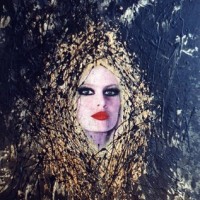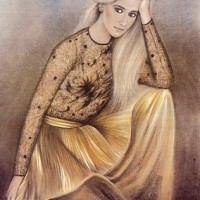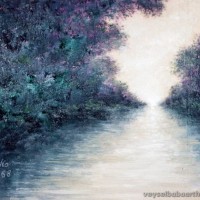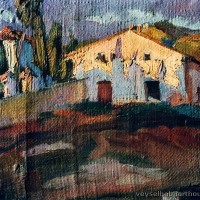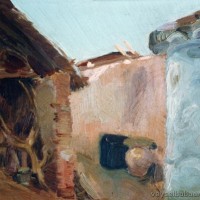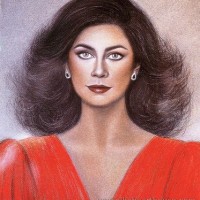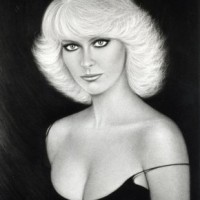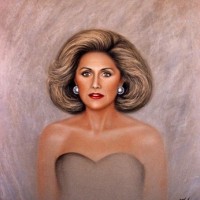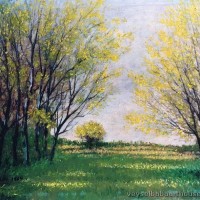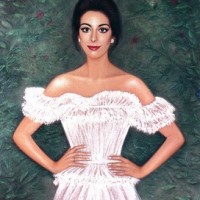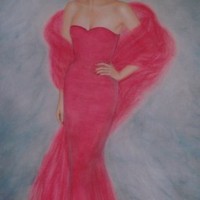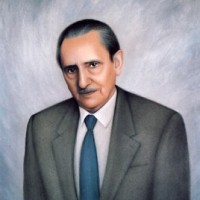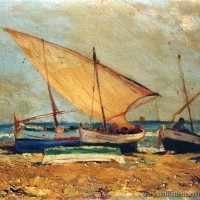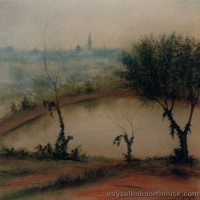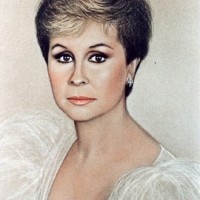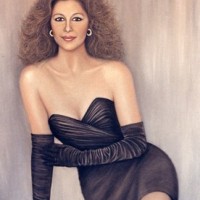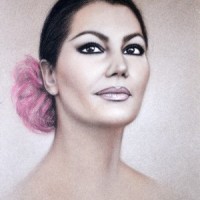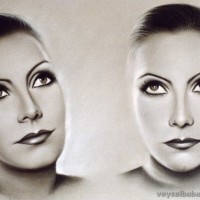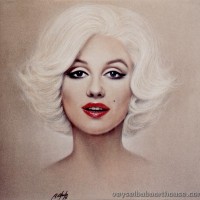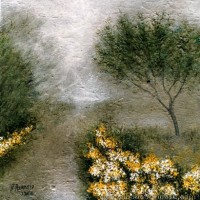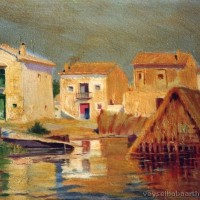- Home
- ABOUT US
- ABOUT VEYSEL BABA
- REDFOX ART HOUSE VIRTUAL TOUR
- MY LAST WILL TESTAMENT
- NOTES ON HUMANITY AND LIFE
- HUMAN BEING IS LIKE A PUZZLE WITH CONTRADICTIONS
- I HAVE A WISH ON BEHALF OF THE HUMANITY
- WE ARE VERY EXHAUSTED AS THE DOOMSDAY IS CLOSER
- NO ROAD IS LONG WITH GOOD COMPANY
- THE ROAD TO A FRIENDS HOUSE IS NEVER LONG
- MY DREAMS 1
- MY DREAMS 2
- GOLDEN WORDS ABOUT POLITICS
- GOLDEN WORDS ABOUT LOVE
- GOLDEN WORDS ABOUT LIFE
- GOLDEN WORDS ABOUT DEATH
- VEYSEL BABA ART WORKS
- SHOREDITCH PARK STORIES
- EXAMPLE LIVES
- ART GALLERY
- BOOK GALLERY
- MUSIC GALLERY
- MOVIE GALLERY
- Featured Article
- Home
- ART GALLERY
- Ricardo Asensio
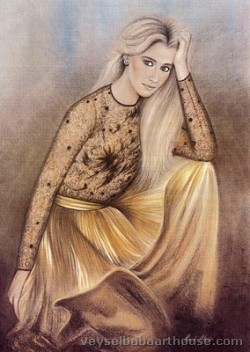
Ricardo Asensio
RICARDO ASENSIO
Prestigious portraitist of intellectuals and illustrious figures, he is an artist committed to the renewal of painting. His work was at first clearly figurative, focused on the faces of the people painted by the artist, as well as in the landscape, treated to oil and pastel, getting his palette a radical turn, from a photographic realism for perfection Of his drawing, to an expressionism of great force in sober tones and rotund compositions.
Formed in Valencia, Barcelona and Rome, he has won numerous awards in important international painting contests, such as the "Mention of Honor" at the New York Winter Hall and the "Mention of Honor" at the Florida Museum of the Americas U.S). Although it is in Italy where the artist gets the consecration in his pictorial career. Since 1979, in which he was a finalist for the Painting Scholarship granted by the Spanish Academy in Rome. It is in the Eternal City where he lives and exhibits a selection of portraits and is distinguished with the "Villa Alessandra Prize" in the Panorama of the Arts, 1981. "Controvento Prize" Rome, 1982. The "Medal for Merit in Fine Arts" Rome, 1996. Prize "Villa Serravalle", Florence 1997. The "Great Collare D'Argento" Palinuro nel mondo. The Prize "Old Florence" and the "Oscar de la Cultura" 2001, Florence. The "Italian Grand Prix" 2003. "La Dea Alata" Award Florence, 2003. The Gold Medal of the "Medusa Aurea" Trophy in its 26th edition, Rome 2003 awarded by the Accademia Internazionale D'Arte Moderna. "Grand Prix Maremma" in the Copa Costa d'Argento of Tuscany. "Grand Prix City of Florence" 2003, of the Accademia "Il Marzocco". First Prize "Costa Tuscany" at the 4th Biennial of Italy. First Prize "Europe" 2004 in Turin. First Prize "S. Ambrogio D'Oro" 2004 in Milan. Gran Collare Academic, Rome 2004. Grand Prix Europa Art "Mediolanum" 2005, Milan. Premio Canova "Gold Medal of the Universal Academy Antonio Canova". First International Prize of Art "Sprigiona the Fantasia" 2005, Turin. "Oscar of Art" 2005 and "Academician of Honor" by the Order of Michelangelo, of the International Academy "Santarita" of Turin. First Painting Prize at the "Hans Christian Andersen Festival" at its Bicentennial, Copenhagen (Denmark). "Donatello 2006" and the "La Dea Alata" Award 2006 in Florence. "Coppa Mundis" from Italy. "Rembrandt Prize" in Holland 2006, coinciding with the 400th anniversary of the birth of the painter in Holland. "Prize Sever a la carrera", awarded by Centro Culturale Internazionale D'Arte Sever in Milan. Coppa Accademia "Artist of the year 2007", Academia Severiade of Milan. "Prize to the Culture", Homage to Giosuè Carducci in its centennial. Center Artistico Culturale Molisano La Conca of ROMA. Grand Prix International "Urbs Mundi" 2008 Italy. Targa Sever D'Oro 2009, Center Culturale Internazionale D'Arte Sever of Milan. Premio Internazionale NOBEL dell'Arte 2009, Milan. "Leonardo Da Vinci" 2009 Universale "prize" ". 2009 Florence, Italy Prize and -" Centro Culturale Internazionale D'Arte Sever.. 1st Prize Targa Biennale 2010, Città di Milano " Oscar de la Cultura" 2011 Milan Award. " , Florence. "Mention of Honor" in Dallas Award USA 2012. International Art Award "Apollo" 2013. Internazionale D'Arte Prize, Salento Porta D'Oriente, ITALY IN ARTE.
Académique de Mérite dell'Accademia Italiana "Gli Etruschi". Academic by the International Academy "Il Marzocco" of Florence. Academic by the "Academia Santarita" of Turin. Academic by the Universal Academy "Antonio Canova". Academician by the International Academy "Greci-Marino", Academician of the Verbano of Arts, Letters and Sciences, ITALY.
Coherent in his work and with a technique that identifies him and stands out in the International Panorama. He has participated in Biennials and Fairs of Contemporary Art, where they have valued his elaborate work and the evolution made by the painter, in more than 30 years of his career.
In its facet as "portraitist", numerous are the personalities of the world of the culture, nobility and spectacle that have been portrayed by the artist. Highlights include the magnificent portraits of Nobel Camilo José Cela, writer and playwright Antonio Buero Vallejo, Princess Beatriz de Orleáns, Isabel Preysler, Marisa Yordi de Borbón, Carmen Martínez Bordiu, actresses Virna Lisi, Faye Dunaway, Brooke Shields, Dalila Di Lazzaro , Victoria Vera, etc ...
His works appear in important public and private collections of Spain, France, Italy, Germany and USA.
"AIM FOR A BIOGRAPHY" by Jacinta Gil
Contemporary art, like so many other aspects of our society, has become industrialized. Unfortunately, the industry has transformed it, it has immense power. It dominates and monopolizes everything, absolutely.
Idealism has practically disappeared. Art is distorted. And of that, have had much to see the media and the publicity.
Currently there is a group of artists in Spain, who for various reasons (there are always vested interests) have stood out, receiving privileged treatment to the detriment of others, are the "fashion artists."
But art was never a fashionable item. Only in this period, "fashions" are imposed. However, time is what determines what is really worth. The true art. The ART (with capital letters) that is permanent and eternal. And the real artists. One of these creators is Ricardo Asensio.
An artist of inexhaustible creativity, vital and passionate, who has been developing a path full of nuances.
It started early in drawing and painting. And in all his work, the professionalism of his technique is appreciated. To this we would have to add his charisma, a strong personality and an impetuous character that is transmitted to everything he does.
But let us know, a little more in depth, its beginnings.
To do so, let us go back in time, still very close, despite its plastic maturity.
Ricardo Asensio, born in Valencia on February 27, l949. As a child, he feels a real love for painting, drawing continuously, as soon as he had the slightest opportunity, showing a skill and a great technique, improper (on the other hand), given his young age and having no real training.
At age 8, he made small oils, which show expressive strokes, hand with nerve, and intelligence.
While studying the baccalaureate at the School of the Marist Brothers of Valencia, he compiled his studies, with painting classes, in which he had as masters his first steps, Llorens Riera and Vicente Barreira.
During his first vacations, in which he moved with his family to the towns of Montanejos (Castellón) and Borja (Zaragoza), he practiced between games and excursions his favorite hobby, painting. From this period, they are his first oils and his first self-portrait (dated to l3 years).
In later years, he would travel through Spain and Europe and his visits to Museums would mark his interest in the classics. Hence at the beginning, copy the old masters trying to imitate his style. His admiration for the Impressionists, for Sorolla and above all for the realism of Velázquez (whom he still considers to be the greatest), would lead in the beginning, his march through the paths of art, although in his later work only serve as reference .
His family, always supported his artistic vocation and when finishing Pre-university, encouraged him to enroll in Architecture.
With a precise, virtuous and exceptional draftsman, he is qualified in the School of Architecture of Valencia, by D. Juan José Estellés, who personally congratulated the artist's father, by approving, in the first call, the subject of Analysis of Forms. Nevertheless when continuing its studies in the Condal City, takes place the estrangement and the lack of interest towards this race and it interrupts definitively. It can be said that in Barcelona he found himself and began his authentic vocation.
Are the 70, a few years in which portrays a large number of people, developing their work between Barcelona, Valencia and Zaragoza.
In l979, he moved to live for a period in Madrid, where he will be a finalist for the Painting Scholarship, granted by the Spanish Academy of Fine Arts in Rome.
In the following years, he made several exhibitions in Spanish cities, until he moved to Rome in l982, where he exhibited in the Marguttone Gallery in Via Margutta (Galleries and Antiques Street). Italy is a total change in his life. In Rome, he experienced freedom and the deal with other artists marked the decisive challenge, to find his own style. There he found, the freedom he needed for his artistic experiments, investigating matters (they are the first phases of his material production). At the same time, he manages to create some pastel works, with the soft tonalities of a Boldini and a Degas. (Remember her series of landscapes from Italy, as well as the magnificent portraits of the beautiful Virna Lisi, Dalila Di Lazzaro and Brooke Shields.) It was that era, when she entered the dynamic Roman life, moving her enthusiasm to the canvas and vitality.
The energy and the color are evident in the works of that moment. However, on his return to Spain and his hometown, enthusiasm and euphoria were truncated shortly after arriving at the death of his father. For Ricardo Asensio, it was a hard blow because he was always very close to his family, which was for him the refuge and strength, and then to be able to perform the pictorial works that were always required of himself. In this way he was in preparation project, his exhibition of Paris. In Valencia he pays his father a final homage, with an exhibition of drawings, portraits and landscapes, in the Artis Gallery.
In the following years, nothing was going to remember his enthusiasm for free Roman life. And the intense color of his last paintings fades. Gone are the thick, swift strokes, full of color that cover the surfaces of the canvases of Positano, Portofino, Venezia, etc. And of so many other corners that reflected in the city of Rome.
In later paintings, a soft color is appreciated and year after year, his paintings became more monochrome, at the same time that they move away from the figurative and enter into abstraction. They are hard, pathetic canvases. At that time he performed few works.
Nevertheless, from its beginnings (still in Barcelona), Ricardo Asensio always dedicated himself to the portrait. For him it was an exceptional interest to observe the person thoroughly, and then to transfer it to the canvas. Numerous portraits made in pencil and charcoal, pastel and oil, make up his collection. A collection that begins first with "family portraits": His father and mother, sister, cousins, uncles, friends and artists. These rather academic works are correct, however it is in the albums of sketches of Asensio, where better is a clarification to his form of work. The original spontaneity of the drawing, the technical possibilities to shape it and a restless and vital form of development, which is part of his own life.
It is in the year 1984, when he marries and the young couple marches to Italy. Again in Rome, he makes contact with the good friends of his previous stay. Trips to Florence and especially to Venice, stimulate the painter. The atmosphere of Venice (winter with its empty and gray streets) are the main theme of his next exhibition on his return to Spain.
His son Ricardo was born in June of l986.
Ricardo Asensio, performs two exhibitions in Madrid. And it is in that of "Club 24", where his popularity seems to overflow as he portrays several well-known characters from the then society. The national press proclaims him as "jet painter" and the portraits made to Isabel Preysler, Marisa de Borbón, Carmen Martinez Bordiu, Victoria Vera, etc ... are reproduced throughout the tabloid press.
However to Ricardo Asensio, this recognition is not interested at all.
He is not satisfied working for success. His sense of independence and his love of freedom prevent him from letting himself be traded.
There are a number of issues that concern the painter. A research painting, a realistic figuration, the landscape (in a very personal creation), in which the artist uses acrylic together with oil, pastel or watercolor techniques on canvas, board, paper or polyurethane board.
Ricardo Asensio states: "If this is what I am doing, I am able to move the person who contemplates it, I will have created something positive, but in order to achieve it, I need a lot of skill and a lot of technique.
And his work, since he began in the seventies in various individual and collective exhibitions, continuing in the eighties, with his presence in International Fairs.
It is the work of a creator who does not give up his permanent research, in relation to the difficult alternation of figuration / abstraction. The work of a painter who knows the History of Art and its dialectic.
Portraits, landscapes, still lifes and diverse compositions, until arriving at the matter as argument (with the risk of the creative artisan, of that insistent fight against the obscure rebellion of the matter). Work with qualities achieved by intelligent manipulation.
It was in l989 in Valencia, when we had the opportunity to see in the inaugural exhibition of the "La Cúpula" Gallery, the anthological exhibition, which stretches from his first works to his most recent creation.
A great exhibition, which has been taken to Barcelona and Zaragoza. And it has been shown in various cities of Germany and Italy. Where, through almost a hundred works (with a tight selection), we find a world of demanding artistic approaches, especially significant and that a painter like Ricardo Asensio, groups in this sample that is born of the soul intensity of the artist.
Jacinta Gil Roncalés
